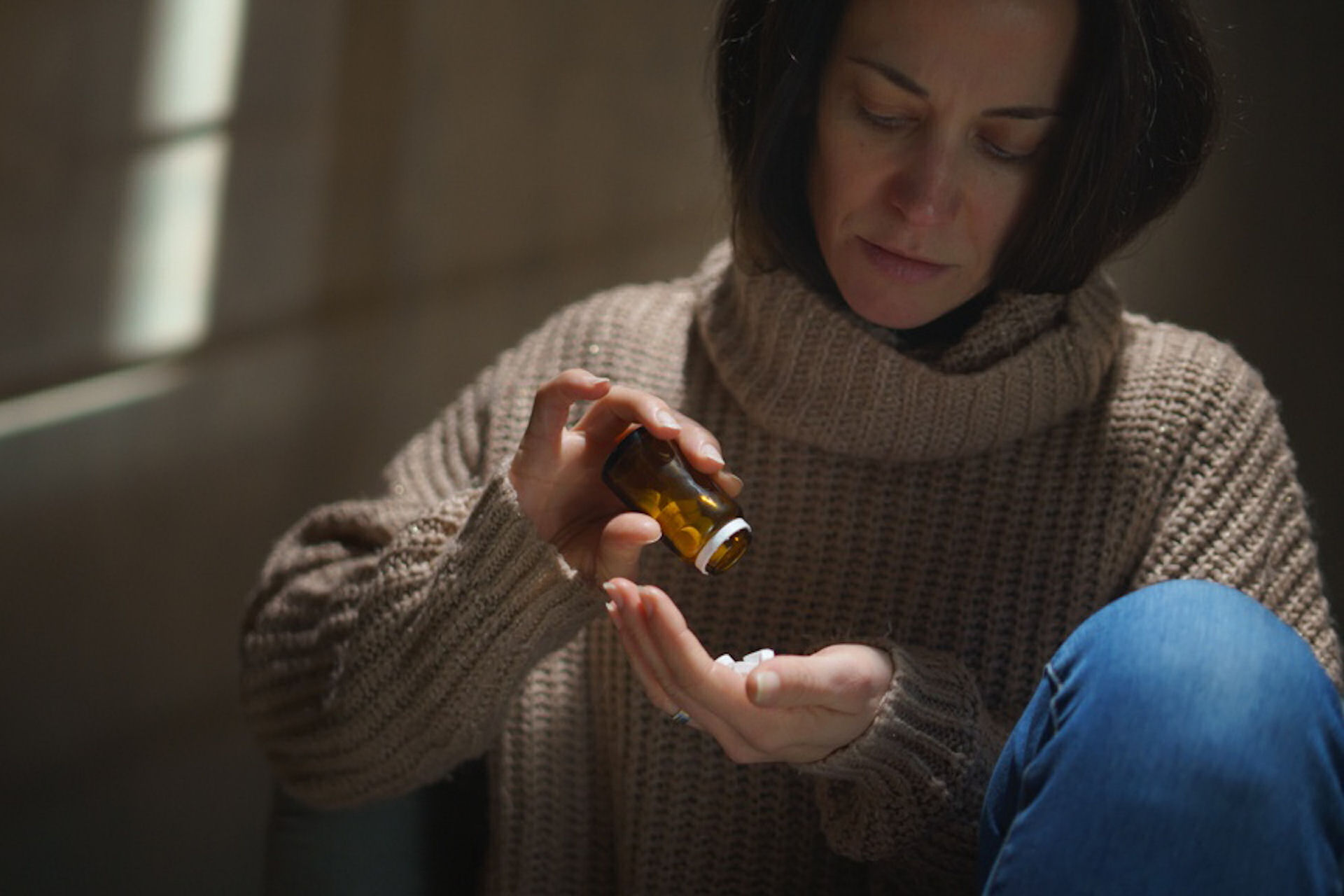You’re out with friends, feeling a bit anxious, so you pop a Xanax. Then someone offers you a drink, and you think why not, right? But what you might not realize is that mixing the two can seriously mess with your body. From making you super drowsy to messing with your coordination and even affecting your breathing, it’s a dangerous game to play.
But it’s not just about feeling out of it for a night. Mixing Xanax and alcohol can lead to some serious long-term issues too. Think addiction, overdose risk, and even memory problems down the line. Plus, there’s the social side of things. Imagine doing something you regret while under the influence of this combo; it could have lasting consequences for your relationships and reputation.
What is Xanax?
Xanax is a prescription medication used primarily to treat anxiety and panic disorders. Its generic name is alprazolam. Classified as a benzodiazepine, Xanax works by enhancing the activity of a neurotransmitter called gamma-aminobutyric acid (GABA) in the brain. This increased GABA activity leads to a calming effect on the central nervous system, which helps alleviate symptoms of anxiety, panic, and related conditions. Xanax is available in various forms, including tablets, extended-release tablets, and oral solutions, and it should only be used under the guidance of a healthcare professional due to its potential for dependence and misuse.
Alcohol, or ethanol, is a central nervous system depressant. It affects the brain by interacting with multiple neurotransmitter systems, including GABA, glutamate, dopamine, and serotonin. One of its primary actions is to enhance the activity of GABA, similar to Xanax. This leads to an increase in inhibitory signaling in the brain, resulting in relaxation, sedation, and reduced anxiety. Additionally, alcohol also affects other neurotransmitters, such as dopamine, which contributes to its rewarding and reinforcing effects.
What is the Mechanism of Action of Xanax and Alcohol?
 When used within the prescribed dosage range, Xanax is generally considered safe. However, consuming high doses of Xanax or combining it with other substances, such as alcohol, can result in perilous and potentially fatal interactions. Both alcohol and Xanax enhance the activity of the inhibitory neurotransmitter gamma-aminobutyric acid (GABA) in the brain, inducing a sedative effect on the central nervous system.
When used within the prescribed dosage range, Xanax is generally considered safe. However, consuming high doses of Xanax or combining it with other substances, such as alcohol, can result in perilous and potentially fatal interactions. Both alcohol and Xanax enhance the activity of the inhibitory neurotransmitter gamma-aminobutyric acid (GABA) in the brain, inducing a sedative effect on the central nervous system.
Mixing depressants like Xanax and alcohol can lead to excessive sedation as well as changes in mood and behavior. It can also bring about physical and long-term effects. Xanax intensifies the effects of alcohol and vice versa, heightening the risk of adverse outcomes. Despite the inherent dangers, some individuals who misuse these substances together do so in an attempt to achieve a heightened sense of intoxication. This behavior underscores the importance of understanding the potential risks and consequences associated with combining Xanax and alcohol.
What are the Effects of Mixing Xanax and Alcohol?
Mixing Xanax, a prescription medication used to treat anxiety and panic disorders, with alcohol can have serious and potentially dangerous effects on the body. Both substances are central nervous system depressants, meaning they slow down brain activity and can cause drowsiness, dizziness, and impaired coordination when taken individually. However, when combined, their effects can be intensified and lead to:
Combining Xanax and alcohol can lead to a synergistic effect on sedation, magnifying their individual sedative effects when taken together. This heightened sedation can result in profound drowsiness and lethargy, making it difficult to stay awake or function normally. In severe cases, this combination can cause a person to become unconscious, posing a risk of injury or aspiration if they are unable to maintain a clear airway while unconscious. Moreover, the increased sedation can interfere with the body’s natural mechanisms for arousal and response, potentially delaying or preventing timely intervention in emergencies.
Both Xanax and alcohol can significantly impact your brain, making it challenging to think clearly, make sound decisions, and react promptly. When you combine these substances, their effects intensify, leading to increased confusion and difficulty concentrating. This heightened state can lead to behaviors that are out of character and potentially dangerous, particularly when tasks like driving or operating machinery are involved. Additionally, over time, this combination can impair memory and learning abilities, creating long-term difficulties in various aspects of life.
Central nervous system depressants like Xanax and alcohol can suppress breathing. Mixing them can lead to dangerous levels of respiratory depression, making it hard to breathe properly. In severe cases, this can even result in respiratory failure, where your body is unable to get enough oxygen. This poses a significant risk to your health and can be life-threatening if not treated promptly.
Memory impairment is a common consequence of using both substances. Each on their own can hinder the formation and recall of memories. However, when mixed, their effects intensify, resulting in exacerbated memory impairment. This combination can lead to blackouts or significant gaps in memory, where individuals may struggle to recollect events or experiences during the period of substance use. The synergy of alcohol and drugs on memory can pose serious risks to cognitive functioning and overall well-being.
Combining Xanax and alcohol not only enhances their individual effects but also raises the risk of overdose. This potentiation occurs because both substances act as depressants in the central nervous system. When used together, they can amplify each other’s sedative effects, potentially leading to respiratory depression, loss of consciousness, and even coma. An overdose in such cases can be life-threatening and necessitate immediate medical intervention.
The liver plays a crucial role in metabolizing both Xanax and alcohol. When these substances are combined, the liver faces increased strain as it works to break them down simultaneously. This heightened workload can lead to liver damage over time, potentially progressing to more severe conditions such as liver disease or failure. Chronic use of Xanax and alcohol in combination significantly elevates the risk of developing these liver-related complications.
Combining Xanax and alcohol can heighten the risk of addiction and dependence. When used together, these substances can reinforce each other’s effects, leading to a heightened sense of relaxation and euphoria. This synergy can create a cycle of dependence, where individuals may feel compelled to continue using both substances to achieve the desired effects or to alleviate withdrawal symptoms. Over time, this pattern of use can significantly increase the likelihood of developing an addiction to both Xanax and alcohol, making it challenging to discontinue use without professional intervention. Seeking support and treatment early on can help mitigate the adverse consequences and promote recovery.
Treating Concurrent Misuse of Alcohol and Xanax
 Concurrent alcohol and Xanax misuse are typically treated through a comprehensive approach that includes detoxification, medication, addiction therapy, and support services tailored to the individual’s specific needs.
Concurrent alcohol and Xanax misuse are typically treated through a comprehensive approach that includes detoxification, medication, addiction therapy, and support services tailored to the individual’s specific needs.
Detoxification, often the initial step in treatment, involves safely managing the withdrawal symptoms associated with alcohol and Xanax misuse. This process is typically conducted under medical supervision to ensure the individual’s safety and comfort.
Medication-assisted treatment (MAT) may be utilized to help manage withdrawal symptoms and cravings associated with alcohol and Xanax misuse. Medications such as benzodiazepine tapering protocols or medications for alcohol dependence, like naltrexone or acamprosate, may be prescribed under medical supervision.
Therapeutic interventions, such as cognitive-behavioral therapy (CBT), motivational interviewing, and relapse prevention techniques, are commonly employed to address underlying issues contributing to substance misuse and to develop coping strategies for managing triggers and cravings.
Support groups, such as Alcoholics Anonymous (AA) or Narcotics Anonymous (NA), provide a supportive environment for individuals to share their experiences, receive encouragement, and learn from others who have overcome similar challenges.
In addition to formal treatment programs, lifestyle changes, including adopting healthier habits, developing positive coping mechanisms, and building a strong support network, are essential components of recovery from concurrent alcohol and Xanax misuse.
Ultimately, the treatment approach should be individualized to address the unique needs and circumstances of each person struggling with concurrent alcohol and Xanax misuse, to achieve long-term sobriety and improved overall well-being.
When to Know It’s an Emergency
It’s important to recognize when alcohol and Xanax misuse become emergencies. Seek immediate medical help if you or a loved one experiences any of the following:
- Difficulty breathing or shallow breathing
- Loss of consciousness or unresponsiveness
- Severe confusion or disorientation
- Seizures or convulsions
- Irregular heartbeat or chest pain
- Suicidal thoughts or behaviors
- Severe vomiting or inability to keep fluids down
- Extreme agitation or aggression
- Profound drowsiness or difficulty waking up
- Any other concerning symptoms that may indicate a medical emergency.
If you suspect that alcohol and Xanax misuse has led to a life-threatening situation, do not hesitate to contact emergency services or visit the nearest emergency room. Prompt medical intervention can be vital in averting severe complications or fatalities.
Westwind Recovery® Can Assist with Xanax and Alcohol Addiction
At Westwind Recovery®, we recognize the complexities of addiction, including the challenges posed by substances like Xanax and alcohol. Our approach begins with a thorough assessment, allowing us to understand your challenges and goals fully. From there, we work closely with you to develop a comprehensive treatment plan that addresses all aspects of your addiction and promotes long-term recovery.
Don’t let Xanax and alcohol addiction control your life any longer. Reach out to us today and take the first step toward lasting recovery. Our compassionate professionals are here to help you reclaim your health, happiness, and future.

Dr. Deena is the Chief Clinical Officer of Westwind Recovery®, an award-winning outpatient treatment center in Los Angeles where she oversees the clinical and administrative program and treatment methods. Dr. Deena is a doctor of psychology and licensed clinical social worker since 1993. LCSW #20628. Originally from the East Coast, Dr. Deena has worked running treatment centers, worked as a therapist in psychiatric hospitals as well as school settings and currently has a thriving private practice in the LA area. Dr. Deena has appeared regularly on the Dr. Phil Show as an expert since 2003. She has also been featured on many other TV shows, podcasts and has contributed to written publications as well as podcasts.




